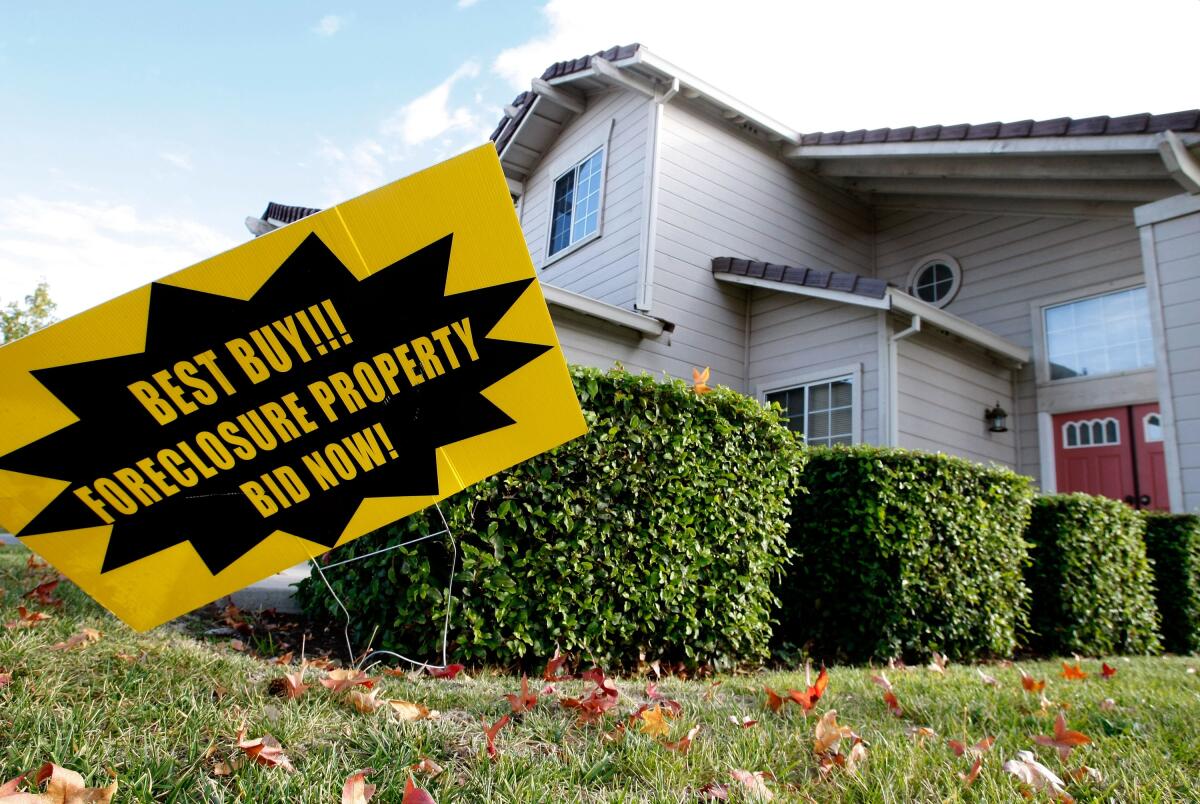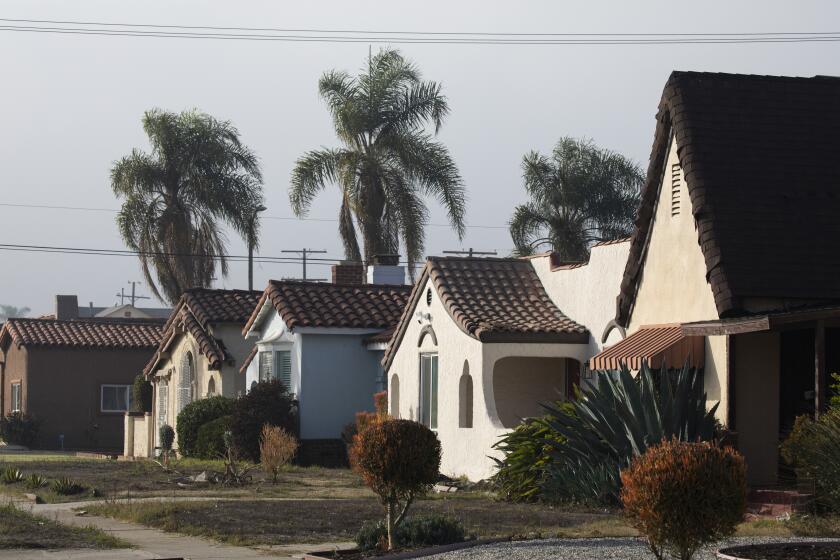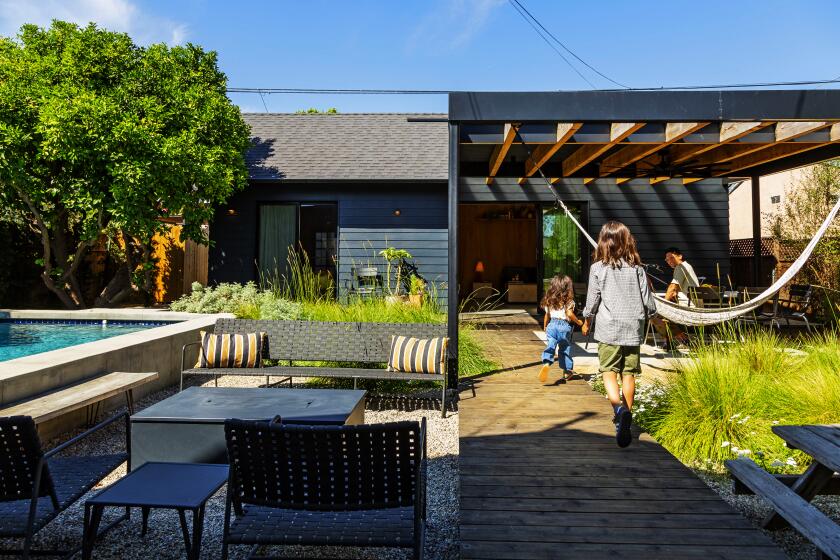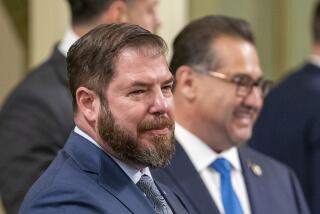California offers help for more homeowners who missed mortgage or tax payments

- Share via
The California Mortgage Relief program is expanding its reach again, hoping to aid more homeowners who fell behind on their payments during the pandemic.
Program officials announced Tuesday that aid would be extended to three new groups: homeowners whose mortgages had a “partial claim” or deferral, those who missed a second mortgage payment after June 2022, and those with a primary residence that includes up to four units. It also offered more aid to homeowners who had previously received help from the state.
One reason for the expansion is that the state has yet to spend most of the $1 billion in homeowner aid the federal government provided through the American Rescue Plan last year. Thus far, about 10,500 households — more than half of them earning only 30% of their county’s median income — have received an average of $28,137 from the program, for a total of just under $300 million.
“Many California homeowners are still recovering from the financial hardships of the pandemic,” Business, Consumer Services and Housing Agency Secretary Lourdes Castro Ramírez said in a statement. “This program expansion will enable the state to assist even more homeowners who fell behind on their mortgage payments. Our primary goal is to keep families in their homes, prevent foreclosures, and assist homeowners on a stable path to financial recovery.”
Tiena Johnson Hall, executive director of the California Housing Finance Agency, said the agency talked to borrowers and loan servicers to figure out how to evolve the program. “This expansion represents months of careful consideration and creative solutions that make sure the most in need get help,” Johnson Hall said.
Volma Volcy, founder and executive director of the nonprofit advocacy group Ring of Democracy, said the most difficult thing has been getting eligible borrowers to take the state’s offer seriously. “They tend not to believe it because it sounds too good to be true. ... This time it’s true,” Volcy said.
“I am imploring you: Come get the help, because it works,” he added.
Under federal law, households earning up to 150% of the median income in their county who suffer a pandemic-related financial hardship are eligible for up to $80,000 for past-due mortgage payments and up to $20,000 for missed property tax payments. According to the federal Department of Housing and Urban Development, 150% of the median income in L.A. County last year was $125,100 for a single individual and $178,650 for a family of four.
A few caveats: If you’ve already paid off your mortgage or tax debt, you can’t recoup that money by applying for state aid. Nor are you eligible for mortgage aid if your mortgage is a “jumbo” loan bigger than the limits set by Fannie Mae and Freddie Mac. Finally, you can’t obtain the state’s help if you have more than enough cash and assets (other than retirement savings) to cover your mortgage or tax debt yourself.
A California law passed in 2021 was supposed to make it easier for homeowners to build duplexes, but few are taking advantage of it.
Here’s a breakdown on the new targets for mortgage assistance.
Partial claim second mortgages and deferrals. Partial claims are a technique to help people at risk of losing their homes after missing several monthly payments on a loan backed by the Federal Housing Administration, the U.S. Department of Agriculture or the Department of Veterans Affairs. Rather than demanding larger payments to cover the past-due amount, the agencies encouraged lenders to split off the past-due portion into a second, interest-free mortgage. That way, a borrower could stay current by paying just their usual monthly payment.
The partial claim second mortgage could be ignored until the house was sold, the mortgage was refinanced or the first mortgage was paid off, at which point the partial claim would have to be paid in full. In the meantime, it’s a real debt that affects the borrower’s ability to obtain credit.
Similarly, some lenders offered deferrals that bundled the missed payments into a sum that was tacked on to the end of the loan. Borrowers wouldn’t face higher monthly payments, but they would have to pay off the deferred amount (a “balloon payment”) when they refinanced, sold their house or reached the end of their loan.
The state mortgage relief program is now offering up to $80,000 to pay all or part of a COVID-related partial claim or deferral.
“Using relief funds to pay down deferred balances for homeowners who experienced COVID hardships restores home equity and puts financially vulnerable families in a stronger position to sustain homeownership,” Lisa Sitkin, senior staff attorney at the National Housing Law Project, said in a statement. “It also alleviates the anxiety of having to figure out how to pay off a large balloon payment in the future.”
More homeowners who fell behind in 2022. Previously, homeowners had to have missed at least two mortgage payments by June 30, 2022, or one property tax payment by May 31, 2022, to be eligible for mortgage or tax relief, respectively. Now, you’ll qualify if you miss at least two mortgage payments or one property tax payment before March 1, 2023.
Homeowners who need a second shot of relief. The mortgage relief program was originally seen as one-time-only assistance. Now, however, California homeowners who’ve already received help can apply for more if they have missed more payments and remain eligible. No household may collect more than $80,000 over the course of the program.
Owners of multiple-unit dwellings. Initially, mortgage relief was available only to people who owned and occupied a single-family home, condominium or non-mobile manufactured home in California. Now, aid will be available to people whose primary residence includes up to four units, such as a duplex, quadplex or a house with an accessory dwelling unit.
The program continues to offer aid to one additional group: homeowners with reverse mortgages who have fallen behind on their property tax or insurance payments.
A proposed project in Baldwin Village would bring 800 apartments, including housing for low-income residents, above a Costco, as well as 400 jobs.
How do you apply?
Applications are available only online at camortgagerelief.org. For help filling one out, you can call the program’s contact center at (888) 840-2594, where assistance is available in English and Spanish.
If you don’t have access to the internet or a computer, you can ask a housing counselor to assist you. For help finding a counselor certified by the federal Department of Housing and Urban Development, call (800) 569-4287. You may also get help from the company servicing your mortgage.
The online application process starts with questions to determine your eligibility. If you meet the state’s criteria, you can then complete an application for funds. Here’s where you will need some paperwork to establish how much you earn and how much you owe.
According to the program’s website, among the documents you will need to provide are a mortgage statement, bank statements, utility bills and records that show the income earned by every adult in your household, such as pay stubs, tax returns or a statement of unemployment benefits. If you don’t have access to a digital scanner, you can take pictures of your documents with your phone and upload the images.
The site provides links to the application in English, Spanish, Chinese, Korean, Vietnamese and Tagalog.
Homeowners and architects share some of the lessons they learned in building an accessory dwelling unit, or ADU, on single-family lots in Los Angeles.
When will the program end?
The state will continue to offer help to homeowners who became delinquent because of COVID-related issues until it has spent all $1 billion from the federal government. The state estimates that an additional 10,000 to 20,000 homeowners will be helped by the remaining funds.
The money will be awarded on a first-come, first-served basis, with one important exception: 40% of the aid must go to “socially disadvantaged homeowners.” Those are residents of the neighborhoods most at risk of foreclosure, based on the Owner Vulnerability Index developed by UCLA’s Center for Neighborhood Knowledge.
About The Times Utility Journalism Team
This article is from The Times’ Utility Journalism Team. Our mission is to be essential to the lives of Southern Californians by publishing information that solves problems, answers questions and helps with decision making. We serve audiences in and around Los Angeles — including current Times subscribers and diverse communities that haven’t historically had their needs met by our coverage.
How can we be useful to you and your community? Email utility (at) latimes.com or one of our journalists: Jon Healey, Ada Tseng, Jessica Roy and Karen Garcia.
More to Read
Sign up for Essential California
The most important California stories and recommendations in your inbox every morning.
You may occasionally receive promotional content from the Los Angeles Times.










